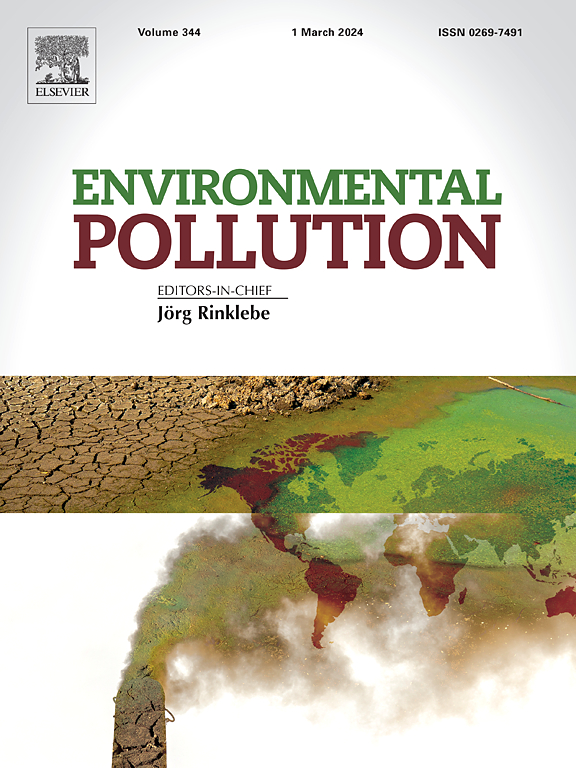Seasonal and regional differences of heavy metals and nutrients from the five mariculture areas of large yellow croaker: Implications for environmental and fish quality
IF 7.6
2区 环境科学与生态学
Q1 ENVIRONMENTAL SCIENCES
引用次数: 0
Abstract
Cage culture is a widely practiced aquaculture method in rivers, lakes, reservoirs, bays, and coastal areas, which generates significant economic benefits but also leads to ecological degradation and negatively impacting fish quality. Previous studies have highlighted substantial variations in fish quality across diverse cage culture regions. This study evaluated water quality, trophic status, heavy metal pollution in sediment and fish from five major large yellow croaker (Larimichthys crocea) cage culture regions in China —DJ (30°12'00"N, 122°41'54"E), DC (28°28'07"N, 121°51'57"E), DT (27°58'49"N, 121°11'43"E), NJ (27°28'46"N, 121°02'37"E), and ND (26°41'21"N, 119°42'32"E)—over different seasons. Results revealed significant eutrophication and poor water quality in the ND aquaculture area, characterized by high nutrient concentrations, low pH, and dissolved oxygen. Heavy metal analysis showed that sediments in ND contained the highest levels of Fe, Cu, Hg, Cd, Pb, and Cr, with the muscle of L. crocea in ND exhibiting elevated levels of Cd, Fe, and As, posing potential ecological risks. In contrast, other aquaculture areas, particularly NJ, exhibited lower pollution levels in water, sediment, and fish muscle, reflecting a more favorable environment for fish farming compared to ND. Seasonal analysis showed a decline in essential metals (Ca, Fe, Cu, Zn) during summer, with recovery in autumn and winter, while toxic metals (As, Cd, Pb, Hg) accumulated in autumn and winter. Additionally, Trophic levels in water and sediments peaked in summer and autumn, displaying region-specific variations. Some correlations between sediment-water nutrients and sediment-fish muscle metals further emphasized the interconnections among sediments, water, and biological systems. These findings emphasize the necessity of enhanced management practices to mitigate pollution and promote sustainable aquaculture.

求助全文
约1分钟内获得全文
求助全文
来源期刊

Environmental Pollution
环境科学-环境科学
CiteScore
16.00
自引率
6.70%
发文量
2082
审稿时长
2.9 months
期刊介绍:
Environmental Pollution is an international peer-reviewed journal that publishes high-quality research papers and review articles covering all aspects of environmental pollution and its impacts on ecosystems and human health.
Subject areas include, but are not limited to:
• Sources and occurrences of pollutants that are clearly defined and measured in environmental compartments, food and food-related items, and human bodies;
• Interlinks between contaminant exposure and biological, ecological, and human health effects, including those of climate change;
• Contaminants of emerging concerns (including but not limited to antibiotic resistant microorganisms or genes, microplastics/nanoplastics, electronic wastes, light, and noise) and/or their biological, ecological, or human health effects;
• Laboratory and field studies on the remediation/mitigation of environmental pollution via new techniques and with clear links to biological, ecological, or human health effects;
• Modeling of pollution processes, patterns, or trends that is of clear environmental and/or human health interest;
• New techniques that measure and examine environmental occurrences, transport, behavior, and effects of pollutants within the environment or the laboratory, provided that they can be clearly used to address problems within regional or global environmental compartments.
 求助内容:
求助内容: 应助结果提醒方式:
应助结果提醒方式:


